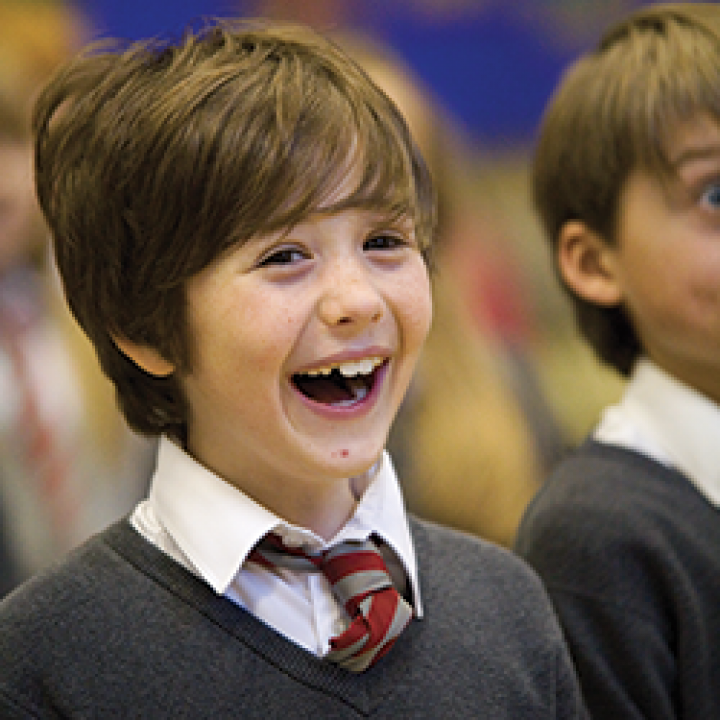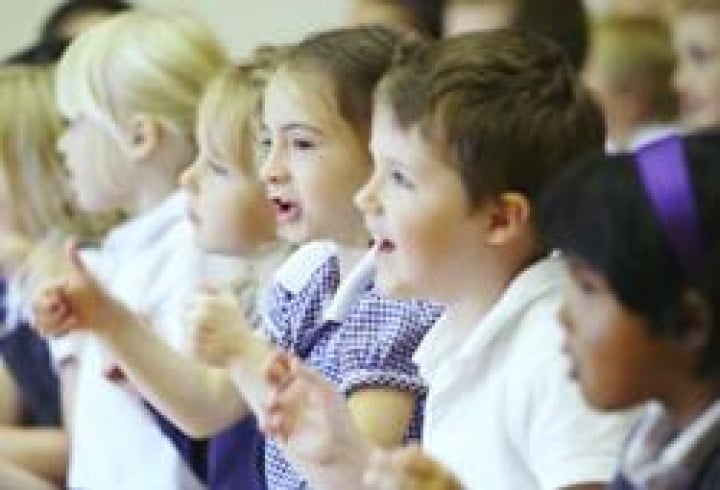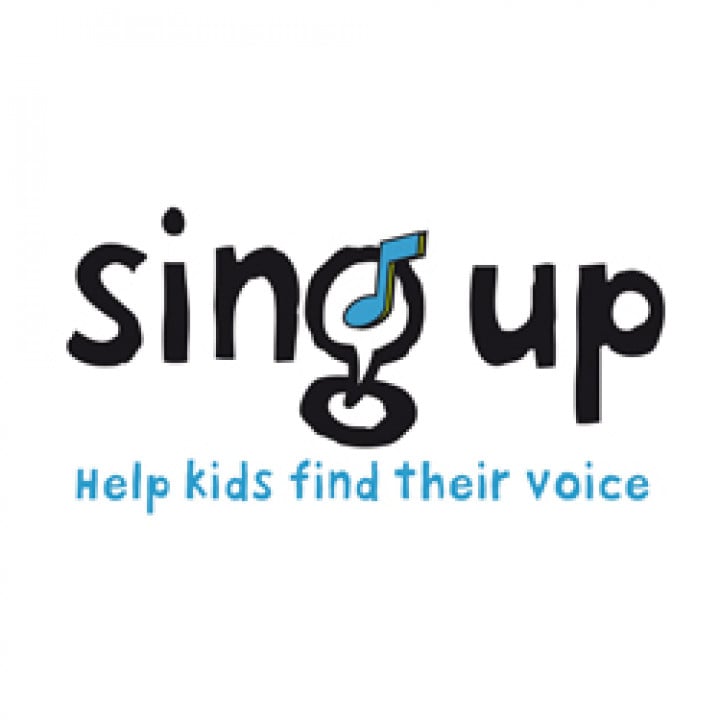
As a professional singer who is a parent, it is important to me that my son has as many opportunities as I did when I grew up. I was very lucky: both my junior and comprehensive schools were full of musical opportunities and I always sang in choirs. This was important to me on so many levels; the benefits are endless – musical, vocal, social, health and wellbeing.
So, I walked into my son’s school and spoke to the music teacher (a wonderful lady who is a music specialist and is in school two days a week). I introduced myself as Fionnán’s Mum, said that I sing a bit and I would like to give my time for free to set up a choir at school. I could see the look in her eye which was a little sceptical so I explained that I sing with a group called The Sixteen at which point the look on her face changed and she knew that I did actually know what I’m talking about.
Making a start, and finding Sing Up
So, we made a plan. We offered choir as an after-school club option and, come the first week, we had approximately 20-25 children. I have sung in choirs all my life and work with choirs through my role with NYCGB so (I thought), of course I can set up a choir, and take rehearsals, and plan repertoire, and conduct. ARGH! All of a sudden, it all seemed very daunting. As someone who spends their time singing Palestrina, Bach etc., I didn’t really have a clue where to look for repertoire (I realised that songs suitable for KS1 or KS2 were not my forte) – cue the amazing resource that is Sing Up.
First term - repertoire, rehearsals and rapping
If I’m totally honest, my aim was to get through this term in one piece and hopefully have something nice to sing to the parents at the end.
I had no idea what standard we would be looking at so I found repertoire that was in unison. I was aware that many of these children may not have ever heard any classical singing but I wanted that to be the basis of choir.
Of course there would be a range of different styles; it was important to make sure they all enjoyed themselves and had fun too. My aim is always to have good, healthy singing so it was important to me that there were a number of pieces that we could really concentrate on this with. It very quickly became clear to me that we could really challenge them as well – classical music is fun too. They enjoy the challenge of singing in multiple parts, of having little solo groups, of singing in other languages and of singing music that is different to anything else they have heard.
The weekly rehearsal followed a fairly standard routine. We start off with a warm-up – always something physical first – mainly to wake the children up but also to make sure their bodies are ready for them to sing. Then we move on to vocal warm-ups, thinking about breathing, range etc. We often then do a song that is well known to them and involves some kind of movement – this is where something like Grandma rap comes in handy. We even taught some of the members of The Sixteen Grandma rap – they loved it. Then we go on to work on new repertoire or pieces that we are working on. I always use varied repertoire to keep them awake and on their toes. We always finish off with something they know well and send them off for a day of learning feeling awake, happy and confident in their own abilities.
The first term involved lots of movement as well – not standing in choir formation for too long. It quickly became clear to me that adding actions really helped them learn the words but also to stay focused. The children really love coming up with the ideas for actions and would even go away, practise and come back the following week with new ideas.
Next steps
It is important to have something to work towards and the children really rise to the challenge of a performance. This doesn’t need to be a big concert – the idea of getting enough repertoire together to fill a whole concert was terrifying. So, we invite parents along to the last rehearsal of each term to do an informal performance and we aim to have one big concert in the Summer term, where we can use repertoire from the whole year, if necessary. Last year we went to a local SEN school where we performed for their children in the afternoon and then did a whole concert for our own parents after school. It was really special for the children to be able to share their talents and their love for singing with everyone.
I am now in the third year of running the school choir and it has evolved so much. We now meet on a Tuesday morning before school and I have around 55 KS2 singers. We perform music in three parts, we can do sign language at the same time as singing, their voices are stronger and clearer than ever. I have had so many parents tell me how being in choir has had such a positive effect on their child, giving them confidence. Everyone fits in at choir, no one stands out – we all work as a team and I am so proud of all they have achieved. I can honestly say that Tuesdays are my favourite day. It really is a fantastic way to start the day.
Warm-ups
Physical
- Faces: wake up! & Faces: morphing – great for getting the face awake and mobile.
- Dr Knickerbocker ek, dho, teen! – always very popular. Warms up bodies and the voice.
- Hey, my name is Joe (Button factory) – good fun.
- Ken and Barbie beatbox groove – add some actions and it becomes both an exercise for diction but also a physical warm-up.
Vocal
- Doo-bi-doo! – fun and rises in pitch which is good for warming up the higher notes.
- Siren – a great, safe way to go through the whole range. We pretend we are emergency vehicles, or fireworks (always with some kind of action as well to stop the children from feeling self conscious about making a new/ strange sound).
- Oompah, stick it up your joompah – good for range and tongue twister.
- Boom chicka boom – wake up brain, mouth and tongue. You can adapt this to whatever you particularly want to work on – clarity of text when singing quietly, or when singing higher etc.
Musical
It is important to me that I should also give the children an element of music theory and the beginnings of learning to read music. The new whiteboard music button is excellent and will really help with this. So, we always include:
- 1, 121 – we also use the Kodály hand signals which help give them the sense of the pitches rising and falling.
- Numbers/intervals warm-up
- Let’s start to sing! – a total warm-up that always makes me smile.
Concert Programme
A varied summer programme to aim towards, which includes part singing, upbeat numbers, some movement and a chance to show off your beautiful legato singing:
- A Keelie
- Billy the kid
- One and a million
- Gospel medley
- The bare necessities
- Will ye go, lassie, go?
- Hey, Mr Miller
- Any dream will do
- Supercalifragilisticexpialidocious – we then sang this as an encore, we got parents to join in and went even faster!
For more information about Charlotte Mobbs and The Sixteen, take a look at https://thesixteen.com/



